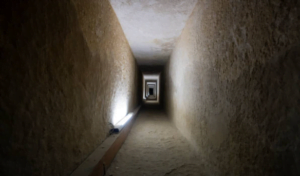Did Ancient Egyptians Have “Power-Tools?”
When one investigates the most fascinating and ancient of structures resting all over our planet, they will inevitably come face to face with baffling feats on engineering and ingenuity. These are tasks that modern man is incapable of comprehending or explaining, and they are sure to blow their minds.
The general consensus surrounding these old constructions has traditionally been something that has been difficult to describe. Not only does the assertion that these wondrous structures were erected by primitive people using only primitive tools seem absurd to the majority of people who have been to such locations, but it also demonstrates a lack of understanding of the true past grandeur of these locations as well as the particular qualities shared by each of these locations.
Ancient sites such as Giza and Machu Pichu, amongst many others, still have artefacts and evidence that are exceedingly puzzling and convey a totally different story from the one that is told by mainstream history.
There has been very little in the way of physical evidence to suggest that people in the ancient times that have been researched used electricity, with the exception of the Baghdad battery, which is widely claimed to have been an ancient form of electro-plating. Despite this, there are many remnants left that suggest that people engaged in such activities.
These particular stones were discarded, laid bare in the quarries, revealing all of the hallmarks of the machine engineering that went into building these wonderful places, these artefacts, once rubbish, now historical treasures.
Not only are there countless clear examples of past machine-worked stone, but more importantly, there is evidence of errors made by the same tools, miss-starts and discovered fault lines. They are able to tell you the shape and movements of the tools that were being used, which demonstrates exactly how these machines cut into the stones, core drillings that were also discarded during the manufacturing process, and cut stones that were discarded due to faults and cracks that revealed the complete preliminary cut marks left by the ancient stone cutters.
In spite of the fact that these bits and pieces of history are undeniably some of the most significant in deciphering the ultimate secrets of these locations, they are only infrequently discussed in the public sphere and even less commonly investigated by official agencies.
Along with this vast and perplexing array of remnants, mercilessly left where they fell, strewn amongst the debris of disruption, lay countless, extremely hardy, machined stone jars, vessels made from some of the hardest rocks on earth, manufactured to a degree of quality, that event to this day would appeal to, and please, even to most discerning of customers.
Jars with perfectly machined spherical bottoms can be balanced on a platform no wider than the end of a chicken egg. The symmetry and balance discovered on thousands of these bowls and vases led Sir William Flinders Petrie to conclude that lathe-turning was likely the method of manufacture. And Petri wasn’t an idiot, either; in 1894 he established the Egyptian Research Account, the forerunner of what is now the British School of Archaeology in Egypt.
According to what he said, “For instance, a bowl-maker would acquire curves of “perfect circularity” by rotating the bowl around a fixed blade. They would then build a lip by altering the centring of the bowl.” Another vase with a spherical base and uniformly thick walls allowed it to stand completely upright on a curving base.
To have a very well respected researcher and specialist of the ancient Egyptians admit to a conviction of the use of power tools in the construction of these pots seems to be quite a stunning position to take, especially when one considers that while metal chisels could have been used to shape soft limestone within ancient Egyptian times, the metals that were available to them, copper, bronze, and during the first millennium BCE wrought iron, were far too soft to work such rudimentary shapes.
It would appear that Petri would like to remain honest regarding his conclusions, despite the fact that he would also like to remain incomplete with his explanations. He would much rather avoid implication by an adversary who is, at this point, rather visible, and would prefer to let the receiver of said information make their own realisations.
It is impossible to avoid coming to the conclusion that the Egyptians were not responsible for the creation of these treasures and ancient monuments. There is, however, more evidence to imply that these mysterious structures were erected a very long time before the ancient Egyptians, much before scholarly understandings, and by a pre-cataclysm civilization that was extremely technologically advanced.
It is impossible for us to comprehend how such effort could have been accomplished or how an explanation for our results could be constructed without the use of power equipment. We are fortunate because the more we discover about these mysterious locations, the more we understand about their actual history, and the closer it appears that we go to identifying the people who constructed them.




